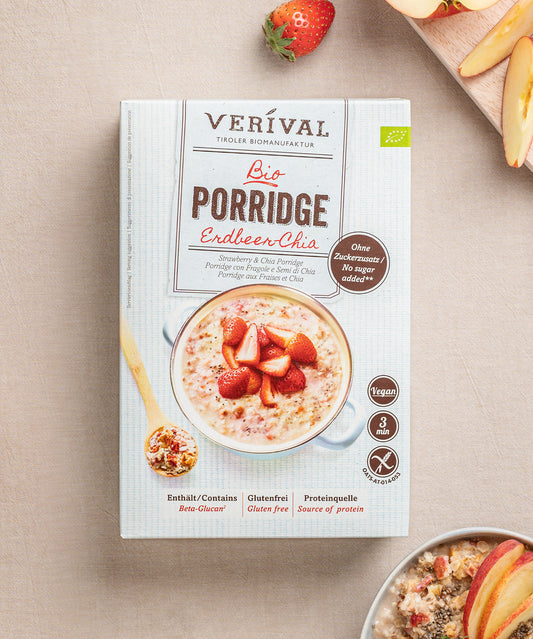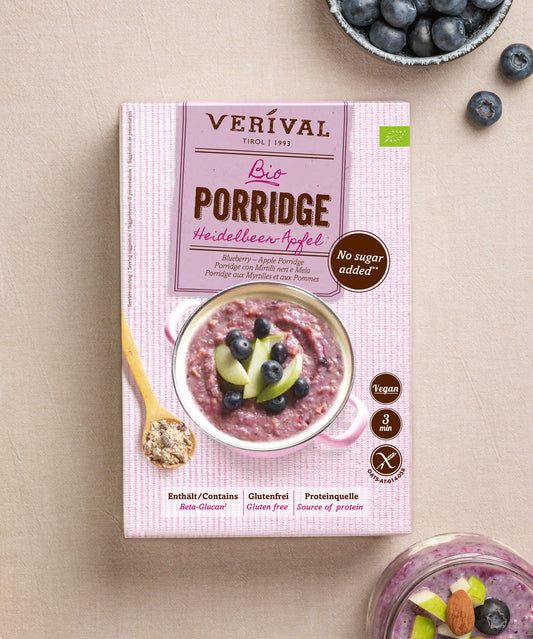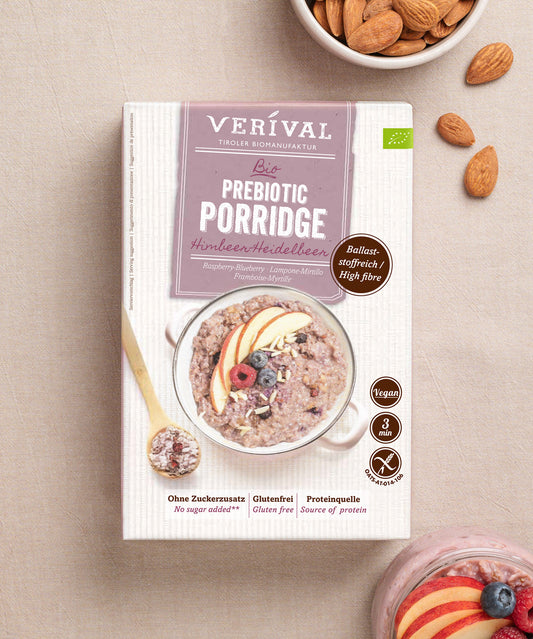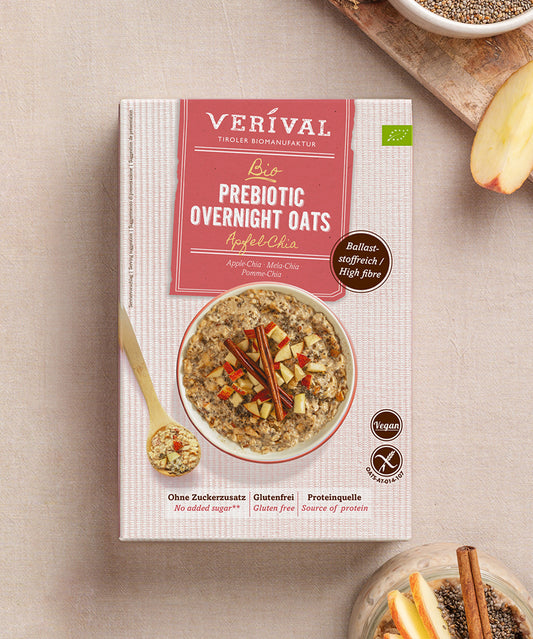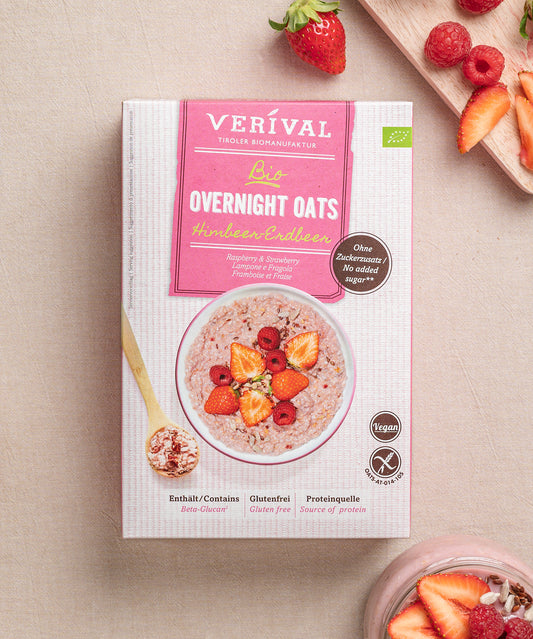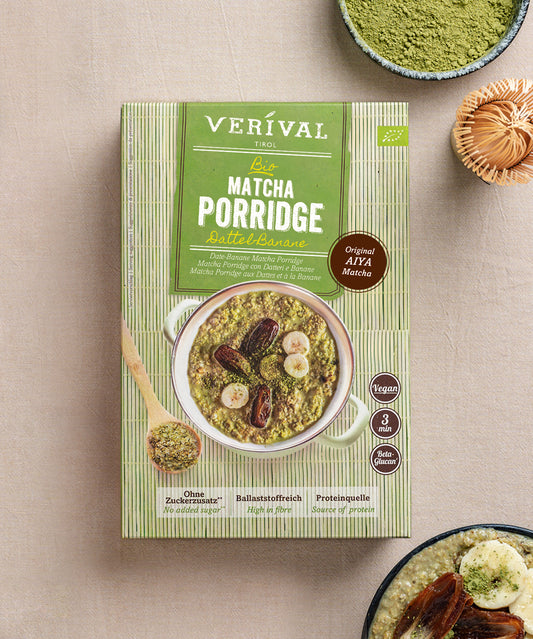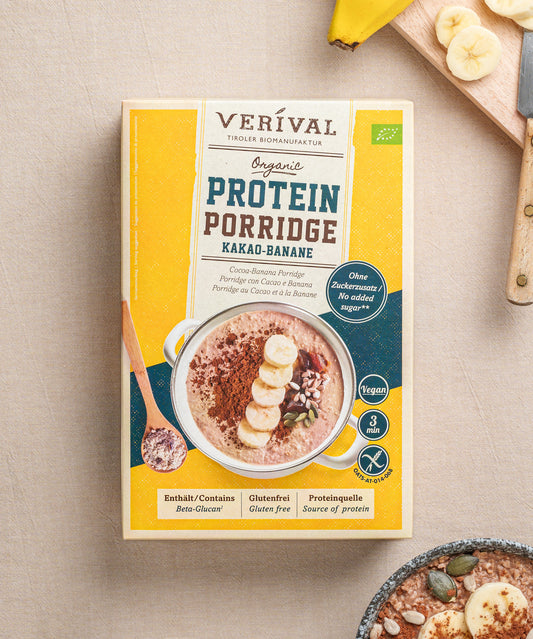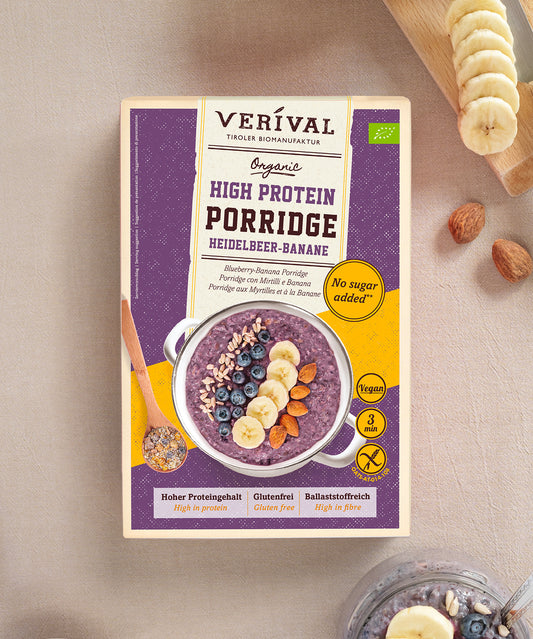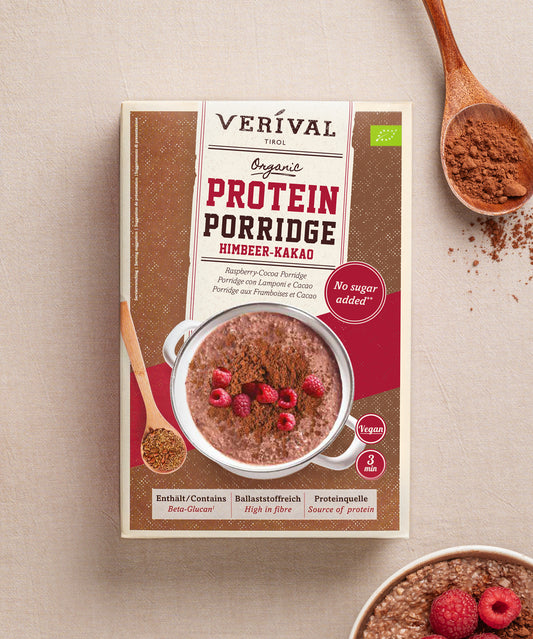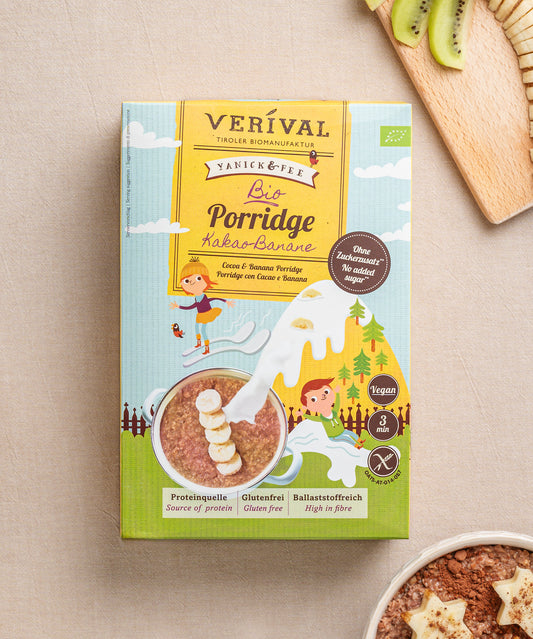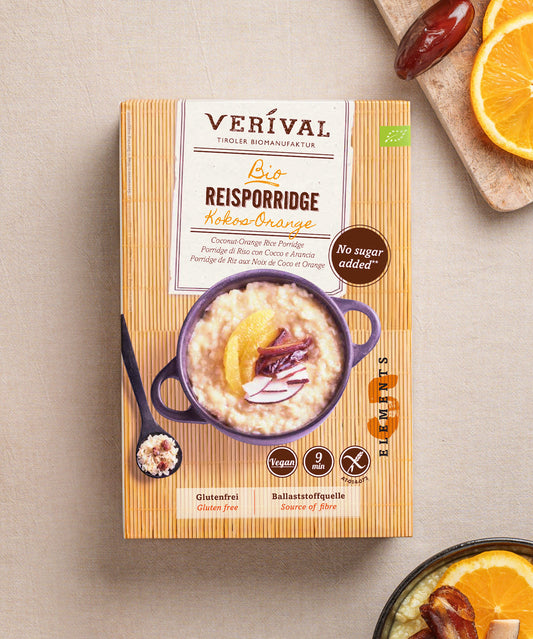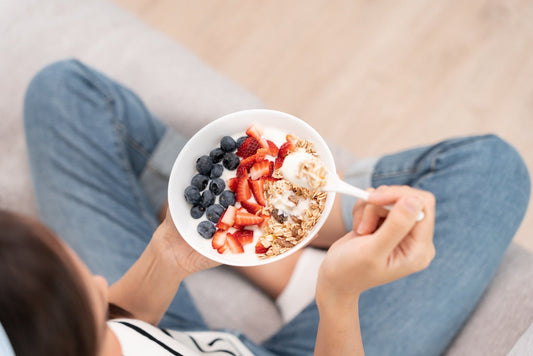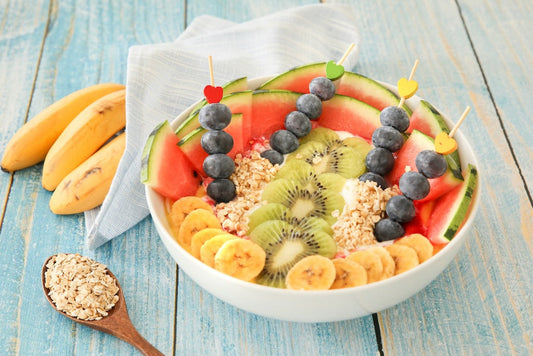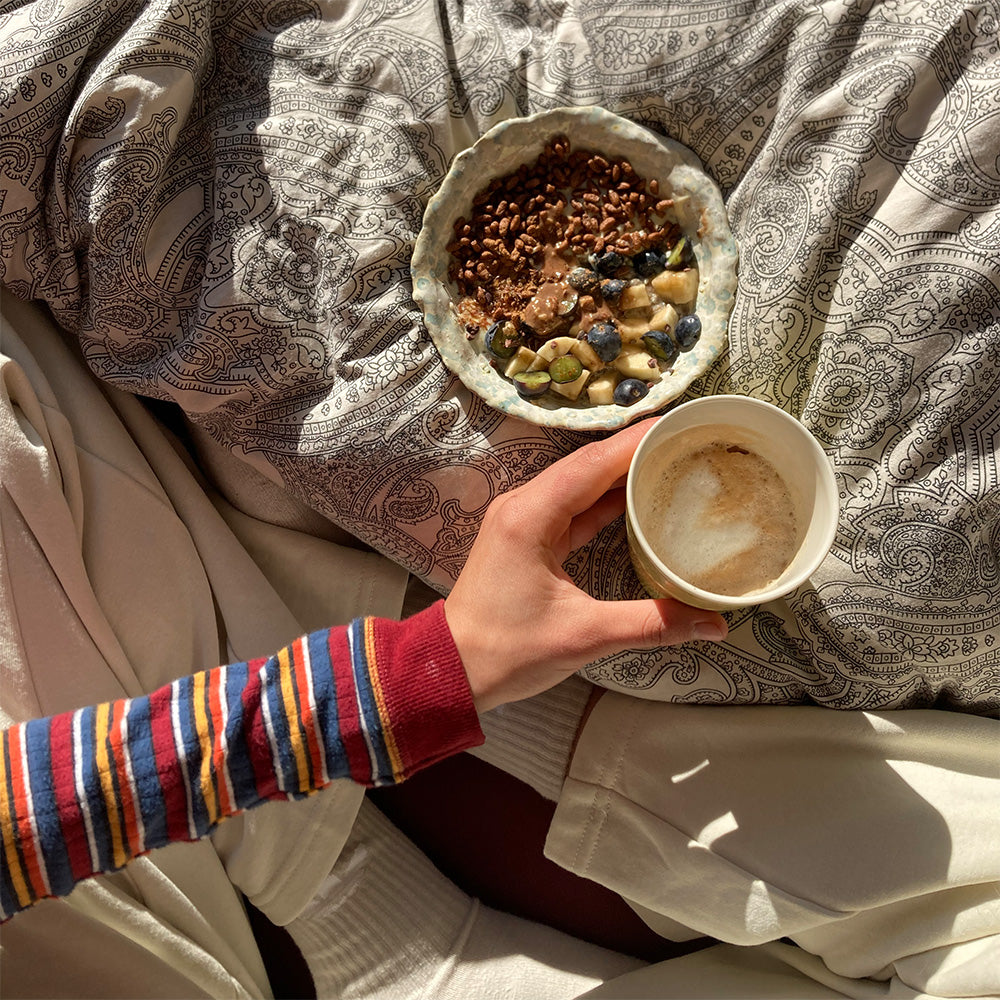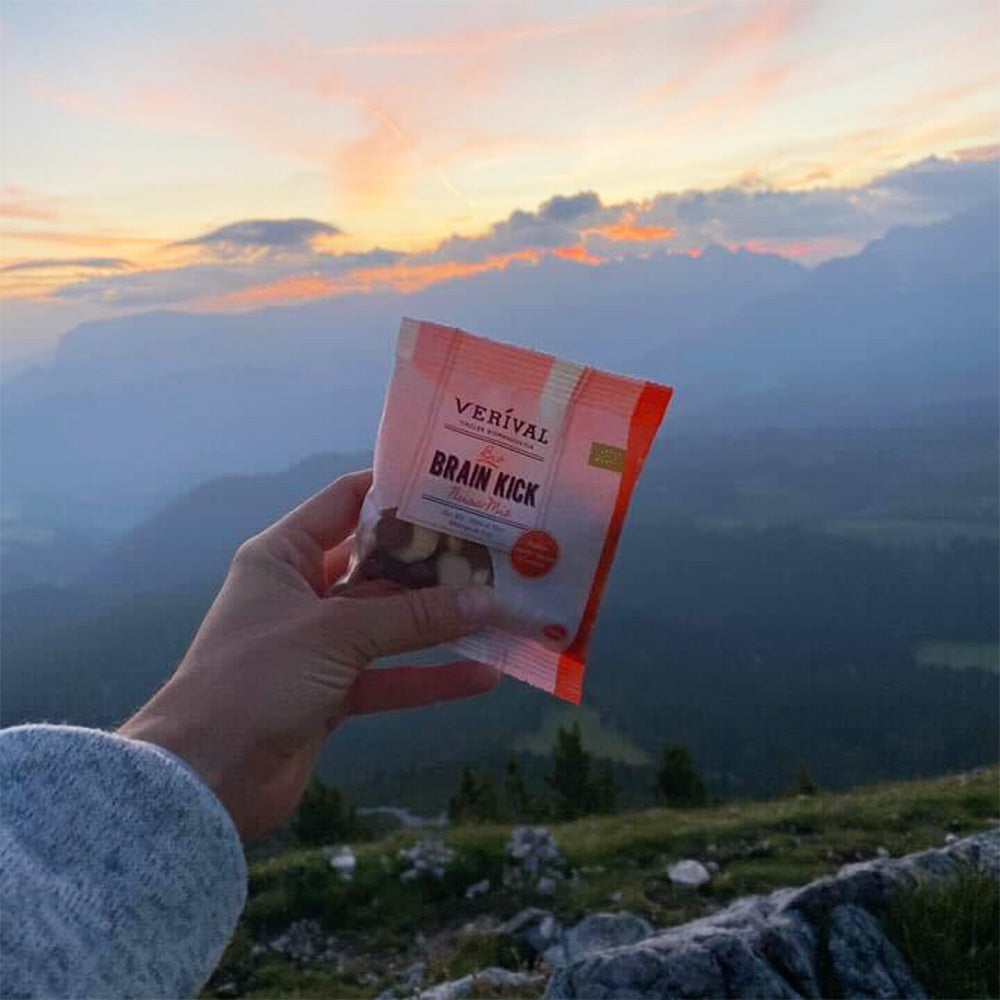Histamine intolerance is one of the most common and least recognised food intolerances. The symptoms are varied and range from skin reactions and headaches to gastrointestinal complaints. Often, the food appears to be healthy, but the body still reacts. The reason: histamine. Some foods contain particularly high levels of histamine, while others promote its release or block its breakdown. In this article, you will learn which products are real ‘flops’ for histamine intolerance and which ones you can eat without hesitation. You will receive clear recommendations, understand the connections – and finally be able to enjoy a relaxed and enjoyable diet again.
Discover and celebrate the entire Verival breakfast range here!
What is histamine intolerance?
Histamine intolerance is not a classic allergy or an autoimmune disease, but rather an intolerance to histamine, a substance produced naturally by the body that is found in many foods. The problem is not the histamine itself, but the way your body processes it.
When the balance between intake and breakdown is disturbed, symptoms can develop that vary greatly in appearance – from skin rashes to digestive problems.
Too much histamine, too little breakdown
Normally, the enzyme diamine oxidase (DAO) ensures that excess histamine is broken down in the intestine. DAO is, so to speak, the ‘filter’ that protects you from histamine from food entering your bloodstream. However, if this enzyme is not active enough or is blocked – for example, by medication, an imbalance in the gut flora or chronic stress – too much histamine remains in the body. This can lead to typical symptoms without an allergic reaction in the classic sense.
Why histamine intolerance is so difficult to detect
The symptoms are not only varied, but also often occur with a delay – sometimes several hours after eating. This makes it extremely difficult to identify the link between food and reaction. Many sufferers spend years going from doctor to doctor without receiving a clear diagnosis.
Only a targeted food diary, an exclusion diet or the targeted use of DAO preparations often provide the clarity that is needed.
Histamine in the body: what exactly does this substance do?
Histamine is not a foreign substance, but a natural component of your body. It is formed from the amino acid histidine and fulfils important functions in the immune and nervous systems. You need histamine – but in the right amount and in the right place. If the balance is out of control, you will notice it clearly: through irritation, inflammation or allergy-like reactions.
A versatile messenger substance
Histamine acts as a mediator in the body – a messenger substance that controls various processes. It is particularly active in these areas:
- Immune system: Histamine ensures that blood vessels dilate and immune cells are activated in response to infections or injuries. It is therefore an important component of your immune system.
- Digestion: In the stomach, histamine stimulates the release of stomach acid, which is important for the digestion of protein.
- Central nervous system: Histamine influences the sleep-wake cycle and regulates appetite, concentration and mood.
When does histamine become a problem?
Normally, histamine stays where it is. Only when it is released in excess – e.g. through certain foods or stress – or when it is not broken down properly does it enter the bloodstream. This causes systemic symptoms such as headaches, diarrhoea, skin reactions or palpitations. The aim of treating histamine intolerance is therefore not to avoid histamine altogether, but to restore the balance in the body.
The symptoms of histamine intolerance: how to recognise them!
Histamine intolerance is so difficult to recognise because the symptoms can vary greatly – and often seem to have nothing to do with food at first glance. Some people react to certain foods with headaches, others with skin rashes or stomach problems. This diversity often makes diagnosis so complicated. Nevertheless, there are typical patterns that you should be aware of.
Common complaints after eating
Many people do not notice the symptoms immediately, but only hours after a meal. This makes it difficult to identify the cause. The following symptoms are particularly common:
- Digestive problems: Bloating, diarrhoea, feeling full or nausea occur regularly after eating in many people affected – especially after eating foods rich in histamine such as mature cheese, red wine or sauerkraut.
- Skin reactions: Itching, redness on the face or neck, and hives (similar to an allergy) are also typical signs. These often occur in conjunction with stress or alcohol.
- Headaches and migraines: It is particularly noticeable that many sufferers complain of stabbing headaches or pressure in the head after histamine-rich meals – often in conjunction with fatigue or sensitivity to light.
- Cardiovascular problems: Dizziness, palpitations or low blood pressure can also occur – sometimes only for a few minutes, sometimes for hours.
Often, the only way to find out which foods trigger reactions is to keep a food diary. If symptoms recur regularly after certain meals, this is a clear warning sign.
What makes a food ‘high in histamine’ or ‘low in histamine’?
Not every food is problematic in itself – the decisive factors are how it has been processed, how long it has been stored and whether it triggers processes in the body that further increase histamine levels. There are various ways in which a food can become a burden – either because it contains histamine, inhibits its breakdown or stimulates the body's own release.
Histamine-rich foods: How the problem arises
Histamine is mainly produced in food through ripening, fermentation or long storage. Microorganisms break down proteins and produce histamine as a by-product. The longer the process takes, the higher the histamine content. Classic examples are mature cheese, sauerkraut, salami and canned fish. Food that is not refrigerated correctly can also develop histamine very quickly, especially fish.
What makes it particularly tricky is that you cannot see, smell or taste histamine. A food can appear completely ‘normal’ and still trigger reactions if your body cannot break it down.
Histamine release and DAO inhibition: the hidden effect
Some foods contain very little histamine but cause mast cells in the body to release histamine – these are known as histamine liberators. These include strawberries, citrus fruits, chocolate and tomatoes. Others block the enzyme diamine oxidase (DAO), which is responsible for breaking down histamine in the intestine. Alcohol, black tea and energy drinks are particularly effective DAO inhibitors.
The result: even relatively harmless foods can trigger symptoms if eaten in combination with others – or if your DAO is already weakened.
Flop foods – products you should avoid
If you have histamine intolerance, there are a number of foods that are almost always problematic. Some of them naturally contain high levels of histamine. Others promote its release in the body or inhibit the enzymes that are supposed to break it down. You should keep a close eye on these products – or avoid them altogether if you want to be on the safe side.
Mature, fermented and poorly stored products
Products that are mature, fermented or no longer completely fresh often contain particularly high levels of histamine. These include:
- Cheese: The longer it is matured, the more problematic it is. Parmesan, Camembert, blue cheese and Emmental are among the worst offenders.
- Sausages and meat products: Salami, raw ham, bacon, liver sausage and all smoked meats are very high in histamine.
- Fish: Tuna, sardines, mackerel and herring – whether fresh or canned – are particularly likely to trigger reactions. Smoked salmon and seafood are also among the high-risk products.
- Fermented foods: Sauerkraut, soy sauce, miso, tempeh and kombucha usually contain high amounts of histamine.
Foods that indirectly promote histamine
Even products that contain little or no histamine can cause reactions:
- Fruit and vegetables: Tomatoes, spinach, avocados, aubergines and citrus fruits are considered histamine liberators.
- Sweets and snacks: Chocolate, cocoa, nuts (especially cashews and walnuts), dried fruit and yeast pastries are often incompatible.
- Drinks: Alcohol – especially red wine, beer and sparkling wine – is one of the strongest DAO inhibitors. Black tea, green tea and energy drinks are also problematic.
You should avoid these foods at least temporarily, especially if you are not yet able to clearly assess your symptoms or are just starting a low-histamine diet.
Verival muesli with no added sugar – try it now
Top foods – well tolerated by people with histamine intolerance
The good news is that despite histamine intolerance, there are many foods that you can eat without any problems – provided they are fresh, natural and unprocessed. These foods contain hardly any histamine, do not trigger its release in the body and do not inhibit the DAO enzyme. They are a safe basis for your diet and provide many nutrients without putting strain on your body.
Fresh, unprocessed protein
Meat and fish are not problematic per se – as long as they are fresh and prepared immediately. Make sure you don't store them for long periods of time and don't reheat them.
- Well tolerated: fresh chicken, turkey, beef, game
- Fish: Only fish that has been frozen immediately after being caught, such as cod or pollock – prepared straight away!
Vegetables that are easy to digest
Many vegetables are low in histamine and also contain important fibre, vitamins and minerals. Particularly suitable:
- Courgettes
- Broccoli
- Pumpkin
- Carrots
- Cucumbers
- Fennel
These varieties can be cooked, steamed or eaten raw – as a side dish, main course or snack.
Fruit varieties with little risk
Fruit can sometimes be problematic for people with histamine intolerance – but it is not strictly off limits. These varieties are considered particularly well tolerated:
- Apples (not overripe)
- Pears
- Blueberries
- Watermelon
- Honeydew melon
Avoid very ripe fruit, dried fruit and exotic varieties with high acidity – this will significantly reduce your risk of a reaction.
Cereals and filling side dishes
Complex carbohydrates fill you up, provide energy and have a stabilising effect on your blood sugar – an important factor if you have histamine intolerance.
- Oatmeal (gluten-free, no additives)
- Millet
- Rice
- Quinoa
- Potatoes
These foods are ideal for breakfast, main meals or snacks and can be combined in many ways – with vegetables, plant-based milk or mild oils.
Why oatmeal is good for histamine intolerance!
Oatmeal is a real all-rounder in your diet – and a particularly good choice if you have histamine intolerance. It contains hardly any histamine, is gentle on the gut and can be used in many different ways. Especially in the initial phase of a low-histamine diet, it gives you stability, energy and security.
Easy to digest, versatile and nutritious
Oatmeal contains important fibre that supports digestion and keeps blood sugar levels stable. This not only prevents cravings, but also relieves the immune system and promotes healthy gut flora — which in turn can have a positive effect on DAO production.
They also provide plant-based protein, magnesium, iron, B vitamins and complex carbohydrates. This makes them a valuable building block when switching to a low-histamine diet, as they provide you with many nutrients without putting strain on the body.
How to easily incorporate low-histamine meals into your everyday life
A low-histamine diet may sound complicated at first, but with a few tricks, it can be easily integrated into your everyday life. The key lies in planning, freshness and simplicity. You don't have to reinvent yourself every day, just create a basis that you can rely on.
Start with a few basic ingredients
Get into the habit of always having a few easily digestible staple foods in the house. These include oats, millet, rice, potatoes, fresh vegetables such as courgettes or broccoli, and easily digestible oils such as rapeseed or coconut oil. This allows you to quickly improvise meals without having to resort to ready-made products.
Cook fresh and in small portions
The fresher you cook, the lower the histamine risk. Avoid storing leftovers in the refrigerator for days or reheating them. If you want to cook in advance, freeze leftover portions straight away – this prevents histamine formation and still saves time.
Plan ahead – but stay flexible
You don't have to write a meal plan for seven days in advance. But if you know what you need for the next day, you can shop specifically in the morning and prepare fresh meals. This saves you from having to resort to emergency solutions such as sandwiches from the bakery or canteen food.
A low-histamine diet works best when you find your own rhythm – with simple, safe recipes, fresh ingredients and a clear understanding of what your body can tolerate.
The best recipes for the perfect low-histamine breakfast
How you start your day often determines how well you feel. If you have histamine intolerance, you should focus on easily digestible, fresh and nutrient-rich foods in the morning. A good breakfast gives you energy, keeps your blood sugar stable and prevents you from reaching for snacks later on that you may not tolerate. Here are three simple, tried-and-tested breakfast recipes that you can adapt to suit your needs.
1. Oatmeal porridge with pear
Ingredients:
- 50 g oatmeal (gluten-free, no additives)
- 150 ml rice milk or oat milk
- 1 small ripe pear (grated)
- 1 teaspoon flaxseed
- ½ teaspoon Ceylon cinnamon
Preparation:
Briefly bring the oats and plant-based milk to the boil in a saucepan. Add the pear and flaxseed and leave to simmer for 5 minutes. Season with cinnamon and enjoy warm.
2. Millet porridge with blueberries
Ingredients:
- 60 g millet flakes
- 200 ml water or coconut milk
- 1 handful of fresh or frozen blueberries
- 1 tsp rapeseed oil or coconut oil
Preparation:
Simmer the millet flakes in water or coconut milk for 8–10 minutes. Remove from the heat, stir in the oil and top with blueberries. Also tastes good lukewarm or cold.
3. Buckwheat pancakes with apple
Ingredients:
- 80 g buckwheat flour
- 1 egg (or egg substitute)
- 150 ml water
- 1 small apple, thinly sliced
Preparation:
Mix the flour, egg and water. Fry the apple slices briefly in a pan with a little oil, then pour the batter over them and fry until golden brown on both sides. Ideal for the weekend – or as a sweet but easily digestible breakfast.
These dishes are filling, do not irritate the intestines and are easy to prepare. You can also freeze them in portions or prepare them as an overnight version.
Verival Porridge – the classic breakfast!
Conclusion: Top and flop foods for histamine intolerance
Histamine intolerance doesn't have to be a daily battle with food. If you know which foods are real flops and which ones you can enjoy without worry, you can regain control. The key is not constant deprivation, but conscious choices, freshness and good preparation. Oats, millet, mild vegetables and selected fruits can make your diet relaxed and nutritious again. With a little experience, clear recipes and trust in your body, you can achieve a low-histamine lifestyle that is not only symptom-free, but also really delicious.


